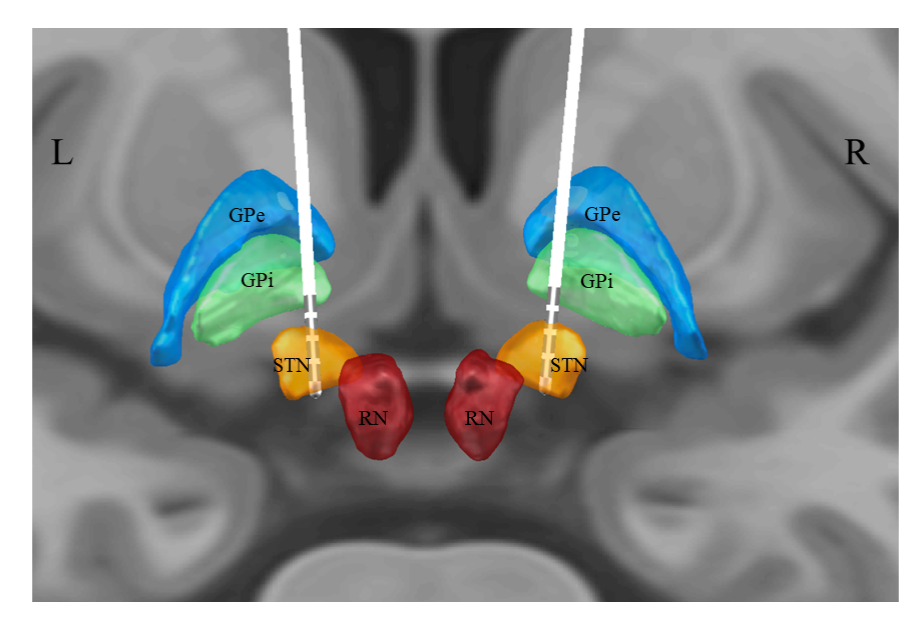Session Information
Date: Tuesday, September 24, 2019
Session Title: Parkinsonisms and Parkinson-Plus
Session Time: 1:45pm-3:15pm
Location: Agora 3 West, Level 3
Objective: To investigate the effect of STN stimulation on different types of dyskinesia and programming strategy.
Background: Long-term use of levodopa or dopamine agonists often leads to Levodopa-induced dyskinesia (LID), which is a frequent and important cause of disability in Parkinson’s disease (PD) and a major reason to recommend surgical treatment. Deep brain stimulation (DBS) of the subthalamic nucleus (STN) is a very effective surgical procedure for PD, but its effect on dyskinesia remains controversial.
Method: A 60-year-old man with advanced PD who underwent bilateral STN-DBS surgery three years ago. He had levodopa-induced dyskinesia (LID) before surgery, and developed stimulation-induced dyskinesia (SID) after surgery. We gathered retrospective his DBS stimulation parameters and reviewed literatures, the programming strategy for different types of dyskinesia were analyzed.
Results: By optimization of stimulation, there was a significantly improvement of his cardinal PD symptoms and kinds of dyskinesia. Off-phase dyskinesia disappeared best correlated with improvement in cardinal motor symptoms. The contacts which located at the dorsal margin or above STN showed the direct inhibition of peak-dose dyskinesia. There were three electrode contacts which located within the sensorimotor region of STN could induce long-term SID, and the threshold for SID did not increase over 3 years, but the SID was managed by using a more dorsal contact, or adding dorsal contact in monopolar to stimulate the area above the STN simultaneously.
Conclusion: STN-DBS stimulation alone could directly inhibit LID. However STN stimulation can also induce long-term SID. Different types of dyskinesia relate to different anatomical locations of STN region, we could use proper programming strategy to get balance between improvements of cardinal motor symptoms, suppression of LID and avoiding SID.
To cite this abstract in AMA style:
L. Li, Y. Zhang. STN-DBS programing for dyskinesia: a case report [abstract]. Mov Disord. 2019; 34 (suppl 2). https://www.mdsabstracts.org/abstract/stn-dbs-programing-for-dyskinesia-a-case-report/. Accessed April 18, 2025.« Back to 2019 International Congress
MDS Abstracts - https://www.mdsabstracts.org/abstract/stn-dbs-programing-for-dyskinesia-a-case-report/


